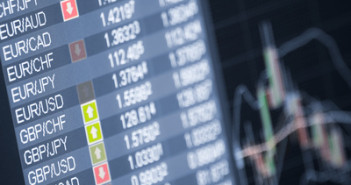International stock indices are in positive territory and risk appetite is up across the currency markets, after data out of the world’s two largest trading nations pointed to an optimistic future for the global economy. The United States kicked things off on Friday morning with the non-farm payrolls report coming in much better than expected. 203,000 jobs were created in November, and the unemployment rate dropped to 7% – a five year low. China followed this up last night, printing stronger-than-expected trade results for November – imports rose 5.3% and exports grew by 12.7% over the same period last year.
Demand-sensitive front month crude oil prices are trading through the $97 mark, while the safe-haven Japanese yen is down on a trade-weighted basis. The euro is holding near a six-week high against the dollar, while commodity-linked currencies like the Australian and Canadian dollars are starting the week on the defensive.Â
This trading dynamic has left many observers baffled. After all, doesn’t the dollar move inversely to equity markets? Isn’t good news for the global economy bad news for the greenback? Shouldn’t positive news from China support sentiment on the commodity bloc currencies? Not in the new world order that has evolved over the past few months…
Firstly, the United States has become the planet’s largest emerging market, with net investment flowing into the country for the first time in more than a decade. A relative increase in competitiveness has meant that an improving economy now spurs asset managers to deploy cash domestically – rather than reflexively buying into countries that export to American consumers.Â
Secondly, it appears that investors have finally come to the conclusion that a tapering in bond buying won’t automatically result in a generalised tightening of monetary conditions. While this may seem to be a difference without distinction, it is important to understand that very little of the Federal Reserve’s largesse over the past five years found its way directly into the equity markets. Instead, the central bank’s purchases artificially displaced private demand for treasuries, effectively pushing asset managers toward shares and other types of investment.Â
In the event that the central bank reduces its purchases, but commits to using a more conventional set of tools to keep interest rates low for a prolonged period, this would remain the case – investors would still be forced out across the risk spectrum in the pursuit of yield, and asset prices might remain more buoyant than has long been expected. This shift in perception is changing trading patterns, with positive news no longer seen as a prelude to a removal of the punchbowl – in fact, improving economic conditions are now expected to support corporate earnings and share valuations.Â
Lastly, if the last five years have taught us anything, it is that the “commodity bloc†is an imaginary construct. Rising raw materials prices have had a deleterious effect on productivity and competitiveness in Canada, Australia, and New Zealand. Although prices increased, inward investment flows increased more quickly – driving up currencies, encouraging malinvestment and raising unit labor costs. Trade balances have plunged into negative territory, and growth gaps have emerged against other major economies. Thus, these countries are no longer perceived as strong plays on the Chinese growth story, and exchange rates no longer respond positively to a rise in demand expectations.Â
What does all of this mean? For most large market participants, a clear lack of investment narratives is sapping demand for currency speculation – according to the Bank for International Settlements, global foreign exchange volumes dropped by almost 6% in October. For corporate hedgers, a new period of unpredictability beckons – long-standing patterns are breaking down while liquidity ebbs. This sets the stage for more volatility in the weeks and months ahead…the possibility of negative moves exists alongside the potential for excellent positioning opportunities.Â
Talk to your trading teams before the holidays – a well-executed strategy will be the key to starting the New Year on a strong footing. Have a great week ahead, and happy trading!Â
Further reading:
Upbeat US unemployment data gives boost to indices; What to expect this week? Weekly overview (02-06 December 2013)
EUR/USD Dec. 9 – Strong Euro Shrugs Off Weak German Trade Balance



